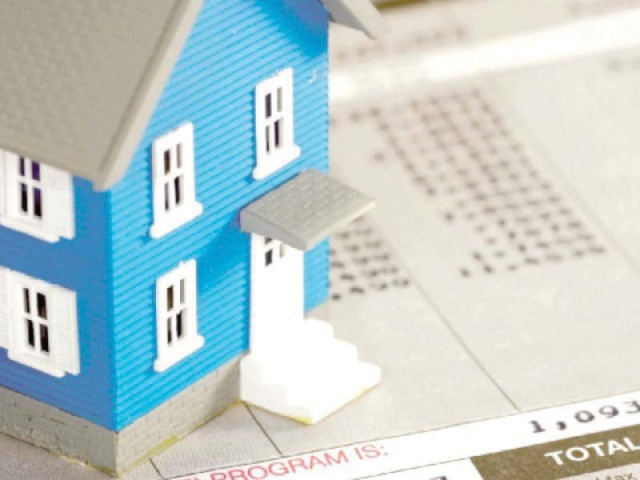Realty sector poised to get Rs15b tax relief
Proposal under consideration after sector complains about business slowdown

The government is considering withdrawing 20% deemed income tax imposed on the real estate sector in the budget that may dent its revenues by another Rs15 billion, taking the total relief under consideration for the top five influential businesses to Rs75 billion.
A top government official confirmed to The Express Tribune on Tuesday that the proposal was under consideration after the real estate sector complained about slowing down of business since July. He said that the final decision was pending.
New Section 7E has been introduced in the Income Tax Ordinance whereby a resident who derives income equal to 5% of the fair market value of the capital assets situated in Pakistan, will be charged tax at the rate of 20%. The FBR has said that the effective tax rate is 1%.
In June, the FBR’s Inland Revenue Policy member Afaq Qureshi said that the government would generate revenue of Rs30 billion from the deemed income.
However, before approval of the law, the government made certain changes to the definition of properties that will be subject to the levy and resultantly the additional revenue estimates were reduced to Rs15 billion.
The Express Tribune reported last week that the government was considering giving Rs60 billion tax relief to the traders, bankers, stock market and transporters. With the addition of realty sector, the relief can go up to Rs75 billion.
While the government is considering reducing the tax burden of rich people and influential businesses, the salaried class has been forced to bear the brunt of economic crisis in the shape of higher taxes and 25% inflation.
The government is planning to implement the relief measures by introducing a presidential ordinance, which will also carry taxation measures to “neutralise” the adverse revenue impact by increasing the burden on other sectors.
Finance Minister Miftah Ismail faced tough questions on Tuesday at a media briefing about his strategy to give relief to the influential sectors.
Responding to a question about doling out Rs42 billion to the traders by withdrawing the fixed tax, Ismail claimed that under the new tax regime the traders would still pay Rs27 billion in the current fiscal year.
The minister insisted that he would ensure that the tax contribution by small traders increase to Rs27 billion in the current fiscal year from Rs6 billion last year.
He said that the gap of Rs15 billion – between the old and new taxation regime for the traders – would be bridged by imposing taxes on other sectors.
He pointed out that the traders had stopped paying electricity bills, which threatened the government’s revenue collection.
The minister acknowledged that there was a proposal to reduce the income tax on banks against the low advances-to-deposit ratio (ADR). In the budget, the government increased the ADR rates with effect from tax year 2022, which would be reversed, he said.
For up to 40% ADR, the government increased the income tax from 40% to 55% in the budget.
The Express Tribune reported last week that the FBR was considering reducing the tax rate back to 40% for tax year 2022 and then set it at 50% for tax year 2023.
The finance minister said that banks were demanding a reduction in the rate from 55% to 50% but no final decision had been taken yet.
For the ADR in the range of 40% to 50%, the government had increased the tax rate from 37.5% to 49%. Now, there is a proposal to revert back to 37.5% for tax year 2022 and set the rate at 45% for tax year 2023.
Banks may receive at least Rs10 billion to Rs12 billion income tax relief. But the finance minister said that the adverse revenue impact would not be more than Rs5 billion.
The government is considering withdrawing the deemed income tax despite the levy being not applicable to many properties.
The law states the deemed income tax is not applicable to one capital asset owned by a resident person, self-owned business premises from where the business is carried out by the persons appearing on the active taxpayers’ list at any time during the year, self-owned agricultural land where agricultural activity is carried out by the person but excluding farmhouse and annexed land.
Published in The Express Tribune, August 17th, 2022.
Like Business on Facebook, follow @TribuneBiz on Twitter to stay informed and join in the conversation.



















COMMENTS
Comments are moderated and generally will be posted if they are on-topic and not abusive.
For more information, please see our Comments FAQ